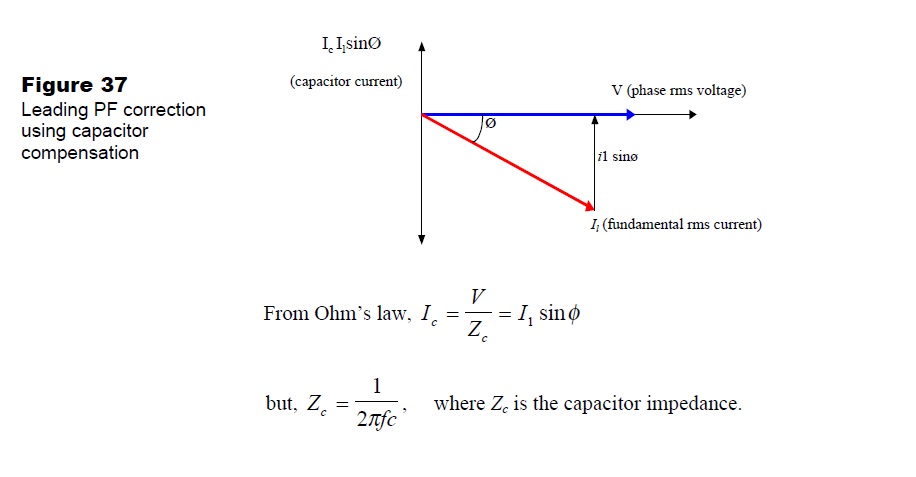Power factor correction
BSRIA Power quality guide (AG 2/2000) was written by C C Pearson and V Uthayanan and published by BSRIA in July 2000. It states:
Power factor correction is often an important consideration for industrial facilities. Harmonic concerns should always be evaluated as part of a power factor correction evaluation, regardless of whether or not the facility has harmonic-producing loads.
Power factor correction basically involves reducing the reactive power losses, thus reducing the apparent power (i.e. bringing the power factor towards unity).
From the above expressions, the capacitor value for the compensation can be found. This will bring the phase angle ø between voltage and current to zero, so that the displacement factor to unity. Since the displacement factor is the PF for linear loads, it can be improved to unity using capacitor compensation. But for the non-linear loads, the distortion factor should be improved to unity as well as the displacement factor in order to bring the PF to unity. To do that, we need to eliminate all the harmonics using harmonic filters.
--BSRIA
[edit] Related articles on Designing Buildings
Featured articles and news
Gregor Harvie argues that AI is state-sanctioned theft of IP.
Many resources for visitors aswell as new features for members.
Using technology to empower communities
The Community data platform; capturing the DNA of a place and fostering participation, for better design.
Heat pump and wind turbine sound calculations for PDRs
MCS publish updated sound calculation standards for permitted development installations.
Homes England creates largest housing-led site in the North
Successful, 34 hectare land acquisition with the residential allocation now completed.
Scottish apprenticeship training proposals
General support although better accountability and transparency is sought.
The history of building regulations
A story of belated action in response to crisis.
Moisture, fire safety and emerging trends in living walls
How wet is your wall?
Current policy explained and newly published consultation by the UK and Welsh Governments.
British architecture 1919–39. Book review.
Conservation of listed prefabs in Moseley.
Energy industry calls for urgent reform.
Heritage staff wellbeing at work survey.
A five minute introduction.
50th Golden anniversary ECA Edmundson apprentice award
Showcasing the very best electrotechnical and engineering services for half a century.
Welsh government consults on HRBs and reg changes
Seeking feedback on a new regulatory regime and a broad range of issues.
CIOB Client Guide (2nd edition) March 2025
Free download covering statutory dutyholder roles under the Building Safety Act and much more.

























